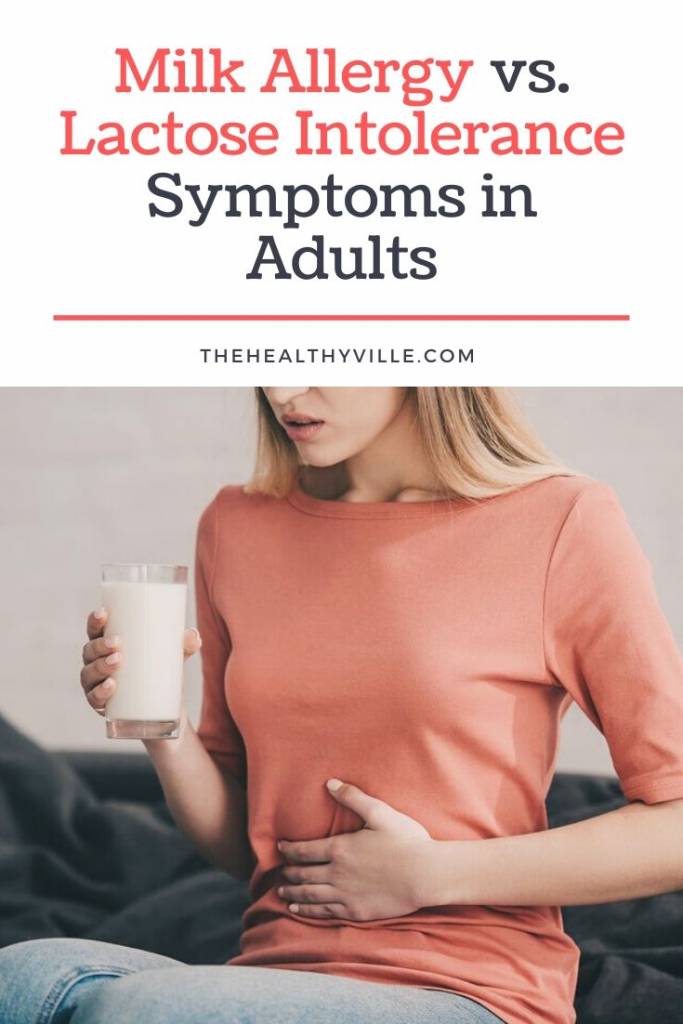Lactose intolerance symptoms in adults are similar to those of a milk allergy. How can you tell the difference? Is there a difference, in fact?
Although they share some symptoms, milk allergy and lactose intolerance are different conditions. However, it is easy to confuse them. For this reason, it is important to know how they differ.
Surely you have heard about dairy and some diseases that are related to its consumption. The most mentioned, probably, are milk allergy and lactose intolerance. Differences exist?
It is essential to keep in mind that, although both conditions share some symptoms, they cause different effects in the organism. Therefore, it is essential to know how to distinguish them.
Milk allergy is actually an allergy to cow’s milk protein, while lactose intolerance is the difficulty in absorbing the sugar present in milk called lactose.
What does the milk contain?
Milk contains several nutrients that are:
- Proteins: casein and whey
- Carbohydrates: lactose (composed of glucose and galactose)
- Fats and vitamins
In addition to these nutrients, milk has water.
Milk allergy or lactose intolerance?
Milk allergy is a condition that is usually caused by the protein fraction of milk. Cow’s milk is the usual cause of milk allergy, but sheep, goat, buffalo and other mammals can also cause this reaction.
Intolerance, on the other hand, occurs directly by the carbohydrate or milk sugar, called lactose, which in turn is composed of glucose and galactose (they are simple molecules).
What happens in lactose intolerance is that the body does not produce an enzyme called lactase that is responsible for allowing its breakdown and absorption.
The fundamental difference is that allergy is a reaction mediated by the body’s immune system and in intolerance the immune response does not exist. Allergy being less common than intolerance.
The other basic difference is that each of these diseases are caused by a different fraction of the milk. One is for protein and another for sugar or hydrate. Milk intolerance requires a different treatment than an allergy.
Milk allergy and lactose intolerance symptoms in adults
Between milk allergy and lactose intolerance, are there differences in symptoms? Common signs and symptoms of milk protein intolerance or lactose intolerance include digestive problems, such as bloating, gas or diarrhea after consuming milk or dairy products.
In allergy the consequences can even be fatal, depending on the sensitivity and response of the immune system. To determine the diagnosis of one or the other, it is necessary to carry out a correct interrogation of the patient and specific tests to observe the reaction to the consumption of milk and milk derivatives.
There are some similarities between the symptoms of allergy and lactose intolerance. However, in the case of allergy they can become fatal, depending on the level of sensitivity.
Precautions
It is important that, if you already have a medical diagnosis of any of these diseases, check the labels not only of the food but of the medications you take.
There are many foods that can say “free of” or “vegan”, but in the list of ingredients you see they may contain traces of milk or lactose.
Similarly, some medicines contain lactose as an excipient for their manufacture. To know what they are, consult this list published in the SVR magazine.
Read more: How To Recognize Allergy Symptoms In Children?
Now, in both conditions it is important to get a proper diet. For this reason, a nutritionist must induct a part of the treatment. This professional will be in charge of determining the diet based on the individual characteristics of each one. Keep that in mind!
Don’t forget to SHARE the lactose intolerance symptoms in adults with your friends and family on your social networks!

